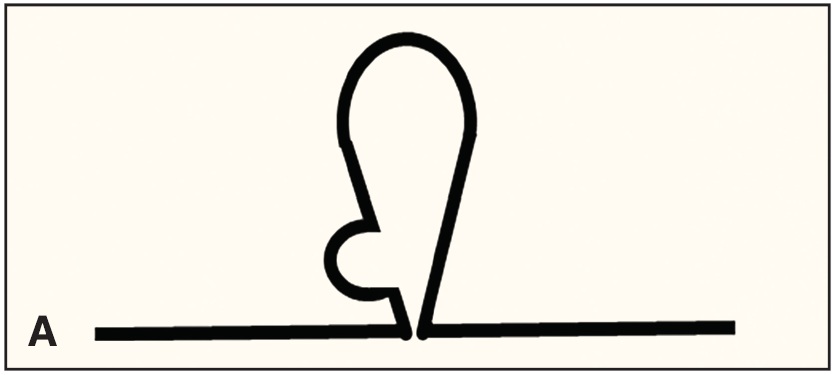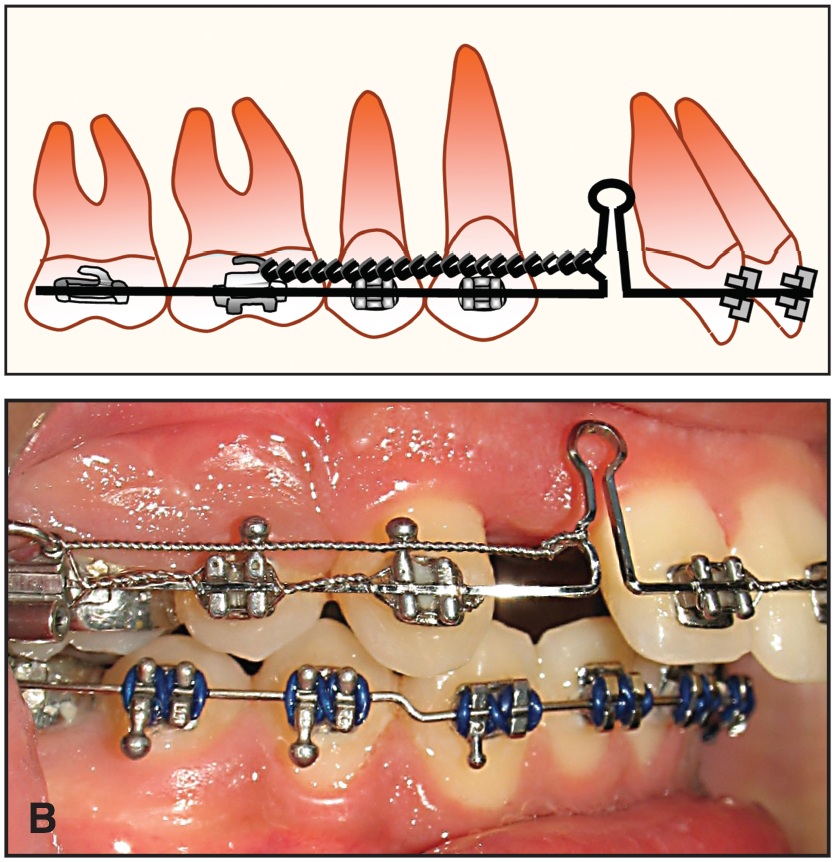Common techniques for activating a closing loop are problematic. Cinching the distal end of the archwire can be time-consuming and inaccurate. Tying back an omega loop between the premolars or between the second premolar and first molar is difficult when the interbracket space is narrow. Lacing back the archwire to a hook is possible, but a crimpable hook can come loose, and a soldered hook requires soldering.
Cureton and Storie recommended a technique in which a U-bend was placed in the distal leg of a teardrop closing loop1 (Fig. A). In a further modification of Cureton and Storie's technique, I incorporate a V-bend rather than a U-bend to hold the laceback ligature in a specific location, avoiding the play that can occur with a curved bend.
The V-bend is placed at about one-third the occlusal level of the distal leg of the loop. After activating the loop, a laceback metal ligature or power thread is tied to the posterior anchoring tooth or to a miniscrew, then attached to the loop's V-bend (Fig. B). Alternatively, power chain can be threaded through the V-bend and looped back through the lumen of one of the chain sections, then attached to the anchorage tooth or miniscrew.
Similar articles from the archive:


This loop modification is simple and fast using a V-bend plier. Without a distal-end bend, the archwire can be removed for regular wire adjustments or the addition of incisor torque, and the same wire can be used during the entire space-closure phase. The amount of activation is easily adjusted by moving the distal leg as needed, then tightening the laceback.
ACKNOWLEDGMENT: The author appreciates the assistance of Dr. Joseph Gafari.
REFERENCES
- 1. Cureton, S.L. and Storie, D.: Simplified activation of closing loops, J. Clin. Orthod. 35:490-492, 1998.


